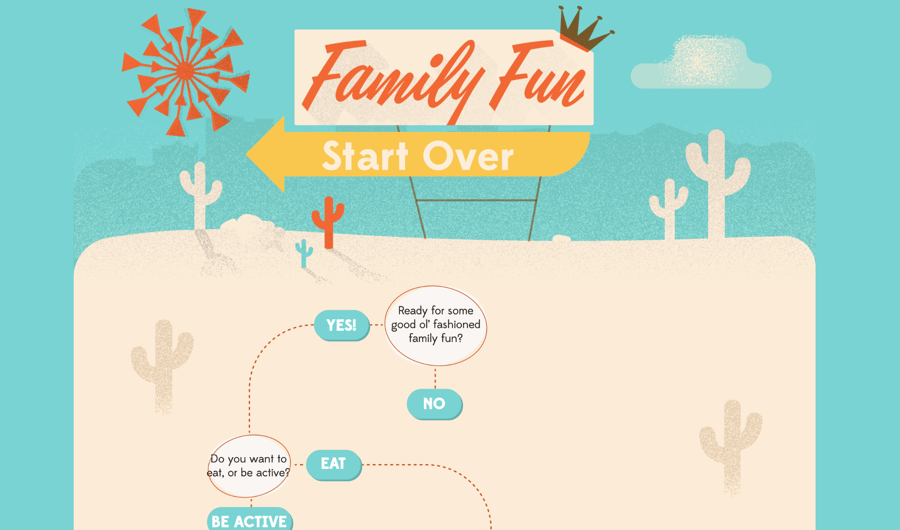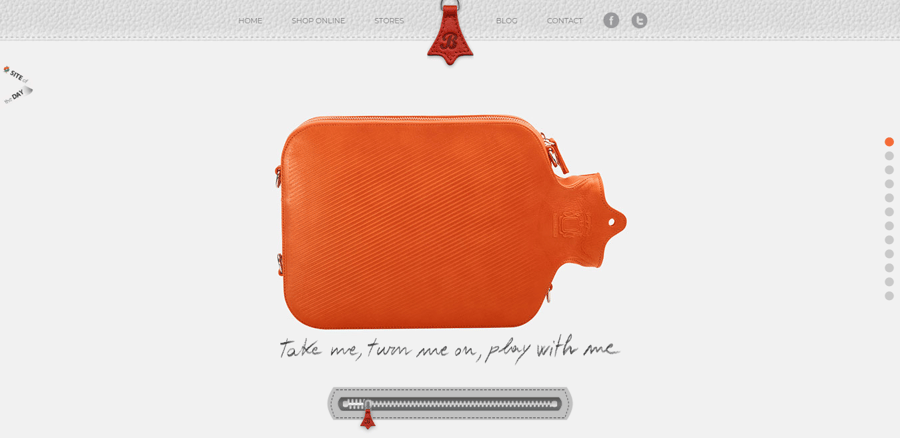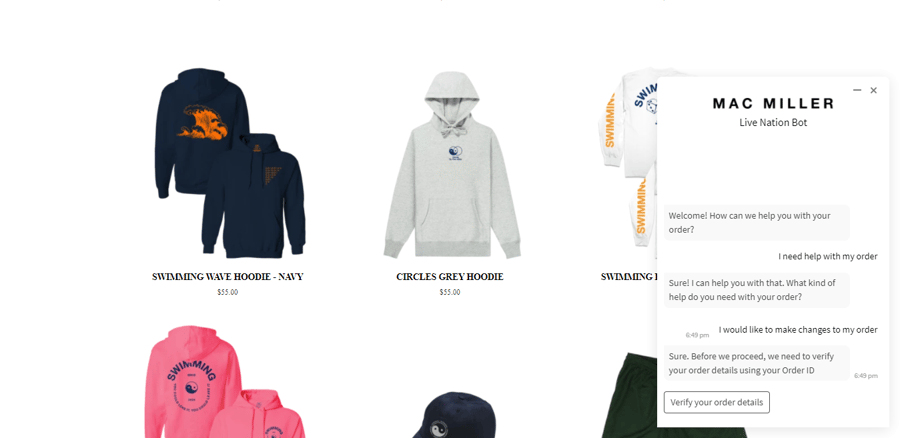
Your eCommerce website is attracting traffic, but very few of those website visitors are translating into sales.
It’s safe to conclude that, while people are intrigued enough to visit your website, there’s something missing in your website experience. For one, customers aren’t engaged enough to stick around and make a purchase.
Here’s the thing: customers like attention. They are most engaged when given a personalized experience.
One of the ways to offer that is by using interactive content in your eCommerce website.
Interactive Content in eCommerce
From the “What Celeb Do I Look Like?” to the “What City Should You Live In?” quizzes, we’ve all taken a BuzzFeed quiz at some point.
That’s an example of interactive content done right.
Interactive content is any type of content that encourages users to actively participate and engage with it. Unlike passive content formats such as blog posts, eBooks, guides, and whitepapers among others, interactive content demands complete attention and participation.
According to a Demand Metric study, 90% believe interactive content is effective at educating buyers, making it a tactful way to engage website visitors and drive eCommerce sales.
Interactive content when done well can help you:
- Educate buyers
- Increase customer engagement
- Drive conversions
- Differentiate your brand from your competitors
- Extract valuable customer insights
7 Types of Interactive Content to Drive eCommerce Sales
Let’s say you’re looking to buy shoes online.
Scenario 1: You come across a blog post on types of shoes.
Scenario 2: You are met with a quiz on the website that aims to find the best shoe for you.
Which one is likely to convert into sales? Chances are the second one. It not only manages to grab attention and keep you engaged, but it also provides a personalized solution.
Moral of the story: greater customer engagement leads to increased sales.
So, let’s take a look at the different types of interactive content you can create to generate conversions and boost sales.
1. Create interactive infographics
Infographics are a combination of visuals and minimal text. They have risen in popularity due to their compelling, engaging, and highly shareable format.
Want to take your infographics to the next level? Add interactivity.
As the name suggests, interactive infographics are infographics with interactive elements.
They can be created to educate buyers, make comparisons, highlight a process, or even convey complex data in an easy-to-digest format. The best part about them is that they let people digest the information at their own pace.
Interactive infographics pique interest, create an immersive experience, and leave the audience with valuable takeaways.
The best thing is, you can easily create them by using online infographic tools or if you want to keep things personalized and brand-oriented, you can easily find an infographic designer to help you out.
Here are some interactive elements you can add to your infographics:
- Scrolling feature
- Hover and click
- Add quizzes, polls, surveys, or videos
- Select sections of the infographic to view relevant information
- Reveal decision paths determined by the user information
Take a look at this interactive infographic by Mariott to promote its hotel in Scottsdale. It suggests local activities based on the user’s responses.

2. Write interactive product detail pages
When people enter a brick-and-mortar store, they can touch, feel, and try products. This isn’t possible while shopping from an online store.
It’s the descriptions and visuals that need to be able to sell your products. In fact, 87% of shoppers rate product content extremely or very important when deciding to buy.
Product descriptions generally comprise a few sentences outlining the features and benefits of the product. They are supposed to inform website visitors about the product and persuade them to buy.
Here’s an example of a traditional product description.

It does its job, but what if you could personalize this section for your audience?
When you create a sense of interactivity, you’re bridging the gap between the online and in-store shopping experience. Instead of solely reading the descriptions and viewing the images, people can interact with them and get a better understanding of the product.
From 3D models and 360-degree rotatable images to customization features and product finder tools, there are many ways to create powerful interactive product detail pages that not only educate buyers but also help them along their buying journey.
Here’s an example of an interactive product page by Bagigia. It lets users view it from all angles while revealing its features in the process.

3. Send interactive emails
Emails from eCommerce brands are almost predictable. They’re either promoting a sale, revealing new products, or sending cart abandonment reminders.
The question is: how do you get your subscribers to take the desired action after reading your email newsletter?
Sending interactive emails can help you stand out in a crowded inbox and increase engagement. Apart from just driving traffic to your landing page, interactive emails can be used to surprise subscribers and get them to engage with your brand without leaving their inboxes.
Use an email maker to create visually appealing email templates and add interactive elements such as:
- Rollovers to view products from multiple angles
- Hover effect to reveal product descriptions on the go
- Interactive quizzes, surveys, and polls
- Insert ratings and reviews
- Scroll through multiple images in a carousel
- Interactive video embeds
While creating interactive emails, it’s advisable to provide backup static images too so that people who can’t access the interactive elements can still view the images.
Make sure you don’t add too many interactive elements because that will add to the size of the email, making it difficult to load.
Here’s an example of an interactive email by Bose. It asks recipients to scratch off the grey section to reveal how much they’ll save on Black Friday.

4. Create interactive videos
Anyone who has watched Netflix’s “Black Mirror: Bandersnatch” will agree how immersive an experience it is. The movie puts viewers in control of how the plot unfolds. With five main endings and over a trillion story combinations, Bandersnatch took social media by storm.
This is an example of a successful interactive video — and the good news is that you can use the same strategy for your eCommerce brand too.
We’re all aware of the power video marketing holds. Add interactivity to that mix and it only gets bigger.
Unlike traditional videos that follow one story path, interactive videos let viewers decide the course of action. Due to this, interactive videos are more engaging and enjoyable than traditional ones.
eCommerce brands can use interactive videos to curate a personalized experience for the viewer. It’s important to design these videos with a purpose, helping you involve the viewer and persuade them to make a purchase in the process.
Here are the different types of interactive videos you can create:
- Shoppable Video: Let viewers click on products, get product information, and shop.
- Branched Paths: Create multiple storylines and unravel them basis the viewer’s choices.
- 360-Degree: Give a multi-dimensional perspective.
- Quiz: Embed an interactive quiz in the video.
- Inputs: Let users enter information during the video.
Take a look at this shoppable video by Ted Baker. It’s a 47-second film with ‘click to shop’ tags on all the products that feature in the film.

5. Build calculators
Everyone online is looking for solutions. As an eCommerce brand, think of how you can provide personalized solutions to your audience and take them down the sales funnel.
Interactive calculators are a type of content that can help you achieve that.
An interactive tool, it requires website visitors to input data and provides a custom, calculated answer instantly. Apart from engaging users, interactive calculators also give you access to valuable insights and data which can be used to inspire your marketing efforts.
It’s best to build interactive calculators when there isn’t a one-size-fits-all answer. For instance, let’s say you’re offering several customization options on a product. You can create an interactive calculator that offers an exact price depending on the user’s choice of customization.
Here are some types of interactive calculators:
- ROI calculator
- Discount calculator
- Price calculator
- Savings calculator
- Investment calculator
Take a look at this interactive calculator example by Walls and Floors. They created a tile calculator to help people calculate the number of tiles they need for their floor.

6. Launch interactive quizzes
According to BuzzSumo, on average a quiz gets shared 1,900 times — that’s more than any other type of content.
“The trick to creating an addictive personality quiz is similar to the art of writing a good horoscope. It has to be broad and all-encompassing yet make people believe the answer applies to them personally. We know there’s little substance to them, and yet we can’t seem to stop taking them,” states a New York Post article.
And that’s exactly what makes quizzes so effective.
But quizzes are not all fun and games. A well-crafted quiz can help you:
- Drive user engagement and increase time on page
- Increase email lists
- Generate qualified leads
- Segment leads
- Provide personalized recommendations
- Extract customer insights
- Drive conversions
Considering depleting attention spans, it’s important to create quizzes that can be completed within a minute. Make sure you choose an intriguing quiz title that captures attention and piques interest in users.
Here’s an example of an interactive quiz by ThirdLove. It consists of questions that consider one’s fit and style preferences. At the end of the quiz, it presents a range of bras that would suit the user’s requirements.

7. Build a chatbot
When you have a question about a product in a retail store, you can ask a sales representative and get your answer.
That’s the role of a chatbot in an eCommerce store.
Chatbots are programs used to emulate human interactions based on a predefined set of conditions or triggers.
The purpose of chatbots is to improve the user experience, guide website visitors, and streamline the buying process.
It’s interesting to note that 34% of people agree that they would prefer to answer questions from AI via chatbots or virtual assistants.
Don’t build a robot-sounding chatbot for your eCommerce website because it’s likely to do more harm than good. Make them contextual and conversational for the best results.
This is where Natural Language Processing (NLP) comes into play. It’s the most advanced type of chatbot technology that understands the context of the user’s queries and engages with them accordingly.
Conversational chatbots can be employed in your eCommerce store to:
- Upsell and cross-sell products
- Answer customer queries and provide real-time assistance
- Remind customers about their abandoned products
- Provide product, delivery, and shipping notifications
- Promote promotional offers
You can integrate chatbots into your website or connect them through Facebook Messenger or Twitter.
Here’s an example of a chatbot on Mac Miller’s website.

The takeaway: boost eCommerce sales with interactive content.
There’s a lot more to interactive content than just driving engagement. A smart content strategy can help you boost eCommerce sales and drive repeat visits.
So, review your business goals and see how you can create meaningful interactive content that delivers an immersive experience and keeps your audience engaged while providing them value.





Leave a reply or comment below